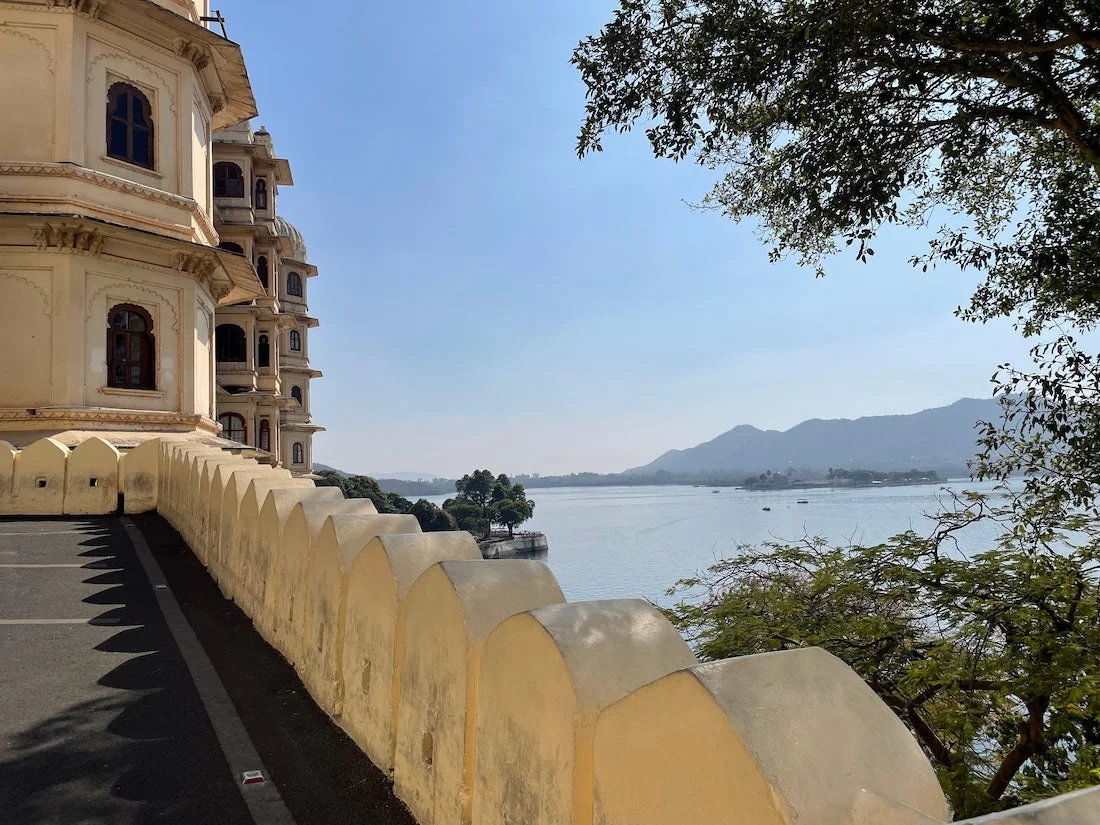Rajastan

Rajasthan, whose name literally translates to “Land of Kings,” stands as a testament to India’s royal heritage.
This majestic state is dotted with former royal capitals, each housing formidable defensive fortifications and opulent palace complexes. Within these structures lies an extraordinary treasury of artifacts that showcase the masterful craftsmanship and sophisticated artistic sensibilities of traditional Indian artisans.

Our journey commenced in Udaipur, with its stunning network of lakes.
The City Palace, rising majestically from the shores of Lake Pichola, served as the seat of the Mewar dynasty for centuries. This architectural marvel represents one of the largest palace complexes in Rajasthan, with construction spanning nearly four centuries under different Maharanas (the title used by Mewar rulers).
While some aspects of the palace’s Indo-Mughal architecture might seem ornate to Western sensibilities, certain artistic elements proved captivating.
One particular chamber left an indelible impression with its richly detailed frescoes depicting court life in intricate detail – processional elephants adorned in ceremonial garb, royal hunting expeditions, religious ceremonies, and scenes of courtly entertainment, all executed with remarkable precision and vivid pigments.


The journey through Rajasthan has been enriched by numerous meaningful interactions with local residents.
One particularly memorable moment involved a persistent fruit vendor whose passionate advocacy for her fresh bananas transcended our language barrier.

We were fortunate to witness a classical Indian dance workshop, where a highly accomplished male guru was instructing students in the ancient art of abhinaya (expression).
The lesson focused on a romantic sequence where each precise hand gesture (mudra) and facial expression conveyed specific words and emotions, demonstrating the sophisticated language of Indian classical dance.

Our route included a visit to the Sahastrabahu Temple, dedicated to Vishnu in his thousand-armed form.
This ancient architectural marvel features remarkably well-preserved sculptures of deities, each telling complex theological narratives through stone.
The timing of our visit coincided with India’s wedding season, providing glimpses into contemporary celebration customs.
Throughout our journey, we encountered numerous couples engaged in pre-wedding photoshoots, surrounded by professional teams managing everything from lighting to traditional costume arrangements.
During dinner, we experienced the vibrant tradition of Rajasthani folk music, with local musicians performing ancestral songs.
The highlight was when their accompanying dancer spontaneously included our companion Poonam in the performance, creating a moment of genuine cultural exchange.
Jaipur’s Amber Fort, perched magnificently on a hillside, represents an even grander scale of Rajasthani architecture. Its countless chambers, corridors, and courtyards offer new discoveries at every turn. From one particular window, I admired a perfectly preserved Mughal-style geometric garden, exemplifying the synthesis of Persian and Indian landscaping traditions.

While many visitors opt for the traditional elephant ride to the fort’s entrance, we chose to make the 12-minute ascent on foot. However, the sight of these magnificent animals making their stately progress up the ramparts provides a timeless tableau that connects present-day visitors to centuries of history.
The fort’s numerous viewing points and architectural niches now serve as popular photo spots for visitors showcasing traditional Indian attire and jewelry.
Among the many fascinating artifacts encountered, I was particularly intrigued by a set of silver printing blocks.
While wooden blocks are commonly seen in traditional Indian textile printing, these silver implements represent a remarkable refinement in the craft, allowing for exceptionally precise pattern transfer.

The discovery of traditional playing cards revealed striking similarities to modern Italian playing cards, highlighting fascinating historical connections between these distant cultures.

The journey also unveiled the rich gaming traditions of India, including the origins of chess, which began here as Chaturanga, a four-player game representing different military units.

Equally fascinating is the game of Snakes and Ladders, originally conceived as a spiritual teaching tool. This game’s squares represent various stages of moral and spiritual development, with snakes and ladders symbolizing life’s setbacks and advantages on the path to moksha (liberation). I look forward to sharing more detailed insights about these games in a future post.
More posts about Rajastan:

